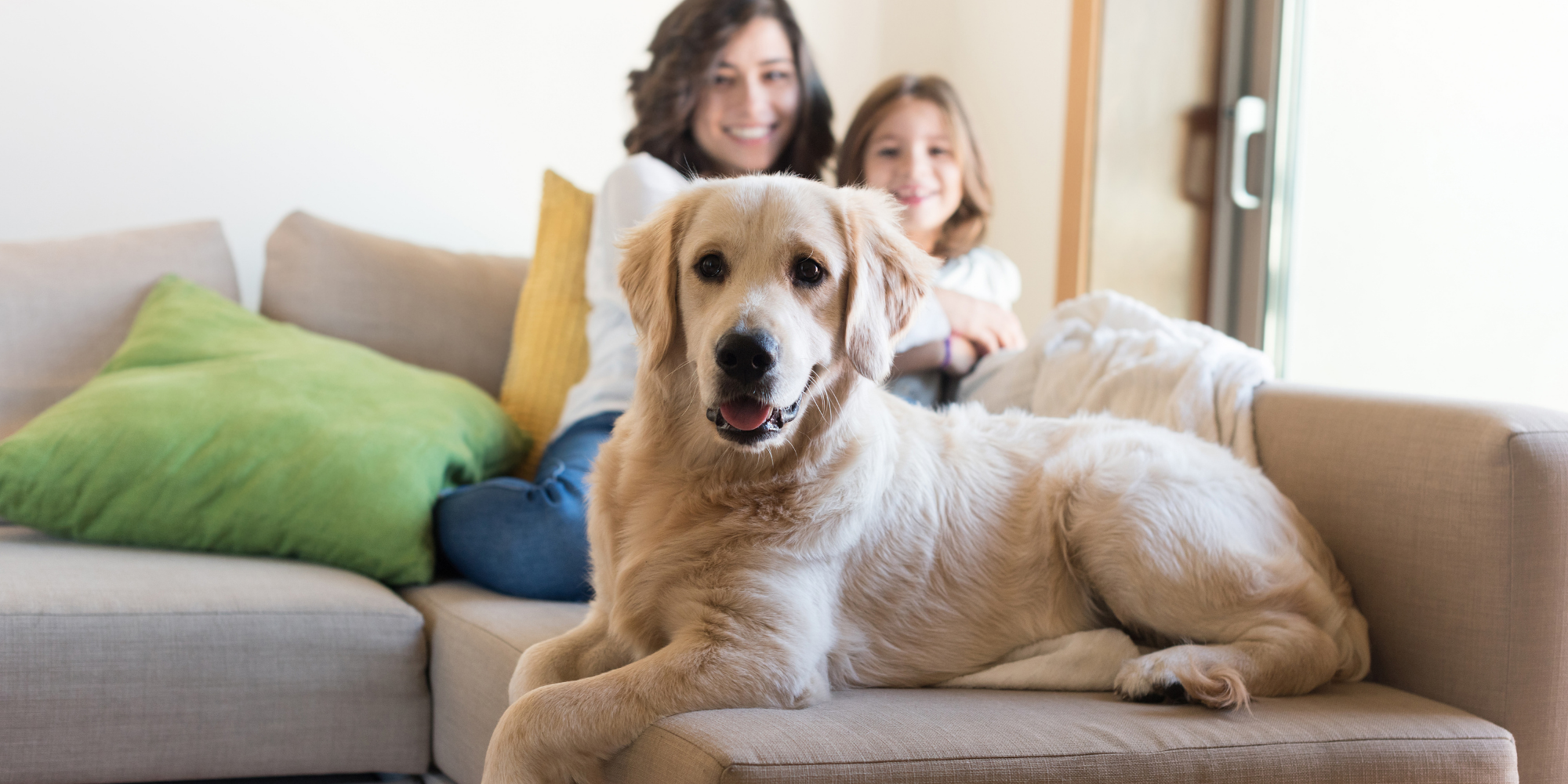
Tips for Moving with Your Pets
Moving your household is a significant undertaking, even under the best of circumstances. Amid all the “organized chaos” of packing up furniture and boxes, remember the needs of your furry family members. Moving may be exciting for people, but for pets a move can be traumatic.
They are leaving a place where they feel secure and comfortable and setting off into the unknown—for reasons they do not understand. While they always want to be with you, leaving what is familiar can still be unsettling. However, there are ways to have your move be pet-friendly and get everyone off to a good start in your new home.
Packing Up the House
In the days leading up to the move, as boxes come out and possessions start to be packed away, some pets may start to feel anxious. They know something is changing, but they don’t understand what. You can reassure them with plenty of play, walks and cuddle time. If they know that all is well with you, and they are not forgotten, it helps put their minds at ease.
Young pets, and cats in particular, may want to “help” with the packing, and see boxes, bags, tape and packing materials as new toys. Be sure to keep some of your pet’s favorite toys out until the last minute so they have fun items to play with. Be sure to check all boxes before sealing them to make sure no one is inside—kittens especially are good at hiding!
Have a Plan
What mode of transportation are you taking for your move? If you are driving, and unfamiliar with the route, check out websites such as www.petswelcome.com or www.bringfido.com for useful information about pet-friendly lodging and restaurants. It’s also a good idea to have lodging reservations as pet-friendly options are often not in abundance. You don’t want to arrive after a long, tired day on the road with no place to stay.
If you are flying, call your airline to verify their pet-travel policy in terms of in-cabin travel. There are often size requirements for crates. You should also consult with your veterinarian about ways to make your pet’s flight as comfortable as possible. Often, an anti-anxiety medication can help. For airlines which focus on comfortable pet air travel, visit https://petairways.com or http://dogtravelcompany.net.
If you are not traveling together, have a pickup time and place confirmed so your pet does not have the anxiety of a long wait. You should also have a contingency plan in place in case there are delays and you cannot get to your pet when expected.
On the Road
If you are embarking on a long drive with your pets, safety and comfort should be your watchwords. A loose dog or cat in the car can quickly turn into an unpredictable projectile if you get into an accident, causing injury to both yourself and your pet. Most veterinarians recommend that pets travel in crates, or at least with a seat belt, to minimize this risk. If using a seat belt product, check with your vet for tips on reliable products. Most vets also do not recommend that pets ride in the front seat, as that increases the danger.
Keep the length of the trip in mind. How often will your pet need to go to the bathroom or get out to stretch their legs? Will overnight stops be necessary? Planning ahead and making note of safe areas to take breaks and pet-friendly hotels is wise. It’s dangerous to walk your dog on the side of a highway, so try to find rest stops away from high-traffic roads.
Pet-friendly overnight stops are especially important for cats. Cats may refuse to eat or use the litter box in the car. Being able to rest in one room for a few hours lets cats acclimate, and makes them more comfortable when it comes to eating and using their box. However, many vets don’t recommend giving your cat full run of the hotel room, or a friend’s home, when you stop. Cats are usually frightened in a new place and can run off and hide. Instead, close them into a small room—like a bathroom or small bedroom for the night.
If you know that your move requires a long car trip, start getting your dog accustomed to the drive a few weeks ahead of time. This is especially important if your dog gets nervous in the car. Start with putting your dog in the car and just sitting in the driveway, and praising him with treats. The next day, take a two-minute drive; then 10 minutes, 15 minutes and so on.
If your pet gets extremely stressed in the car, and training is not helping, make an appointment with your veterinarian to discuss possible sedatives or anti-nausea medication for the drive. It is important to have this talk with your vet so that the solutions are appropriate for the length of the trip, the age of your pet, his overall health, and the severity of his anxiety in the car.
The age of your pet plays a role in how many bathroom or exercise breaks are needed, so take that into account when planning your route and timeframe. Young dog and elderly dogs will both need more stops. Older pets may also get sore and uncomfortable after being too long in the car, so you may want to ask your vet about pain medications.
NEVER leave your pet in a hot car for even a few minutes. Car temperatures quickly escalate to dangerous levels and cracked windows do not provide enough air.
NEVER let your dog ride in the back of an open truck—they can easily jump out or be thrown out if you stop quickly.
And NEVER let your dog ride with his head stuck out the window or the windows all the way down—it is too easy for a dog to jump out or be thrown out. Even if only his head is out, the air flow is very drying to eyes and nasal passages.
DO pack supplies that will make your pet’s road trip as comfortable as possible. Include ample food and water, favorite blankets and toys to snuggle with, and any medications. Offer lots of cuddle time, play time and reassurance that all is well.
Have a pet-friendly moving plan, and you and your furry family will be off to a good start in your new home!
“My husband and I had actually stopped searching for a home because it was so frustrating…I reached out to Kelly about a property and am so happy we connected as we found our perfect home! As first time homebuyers, she walked us through each step, explaining the process and making us feel so comfortable with the experience.……..”



